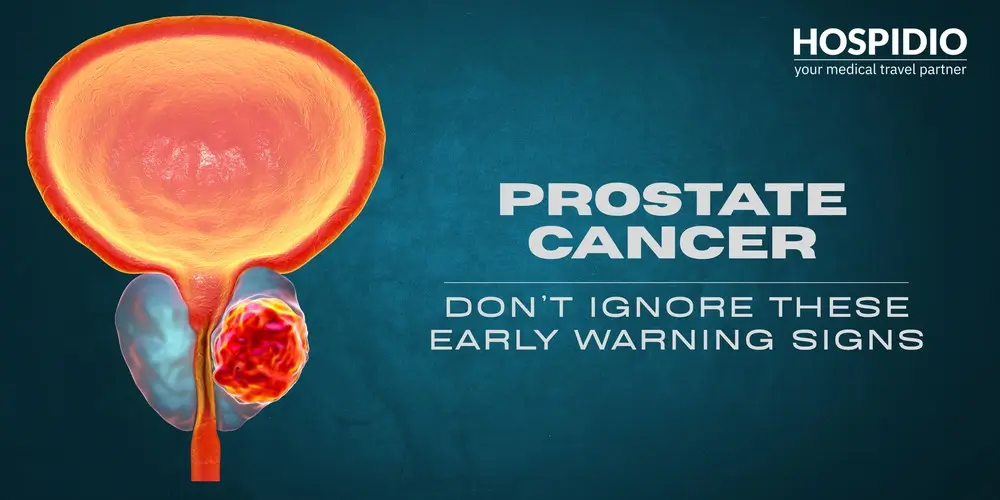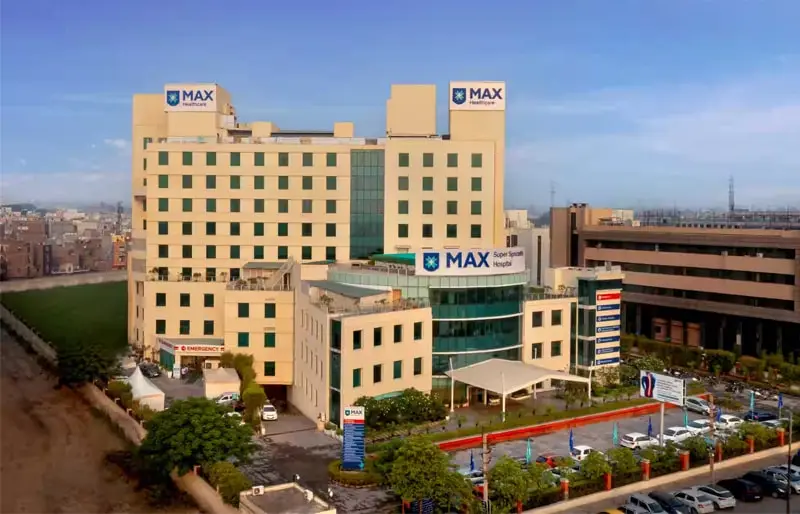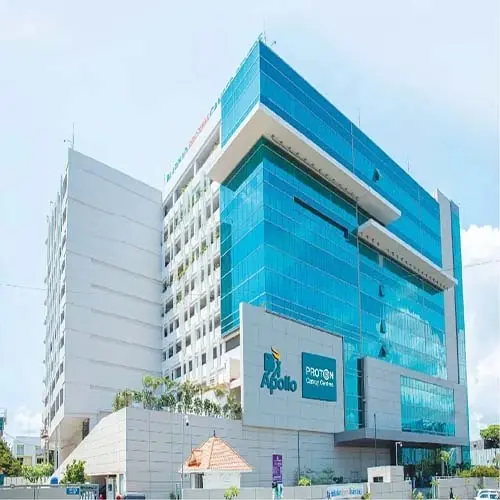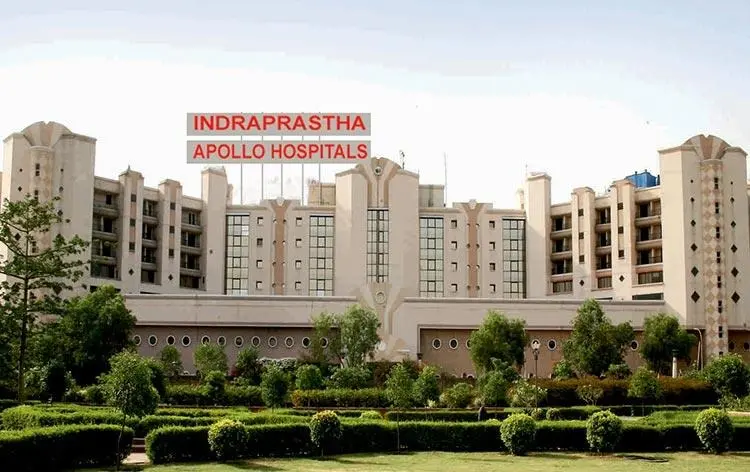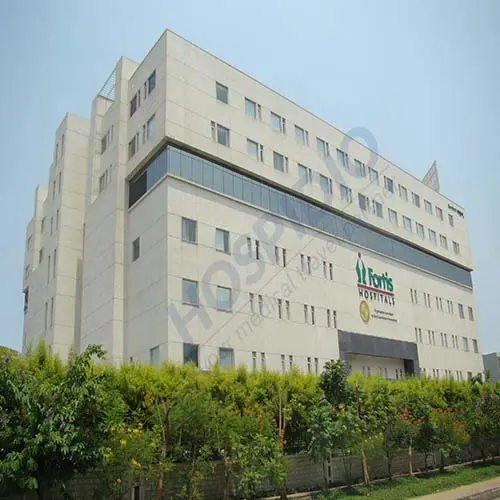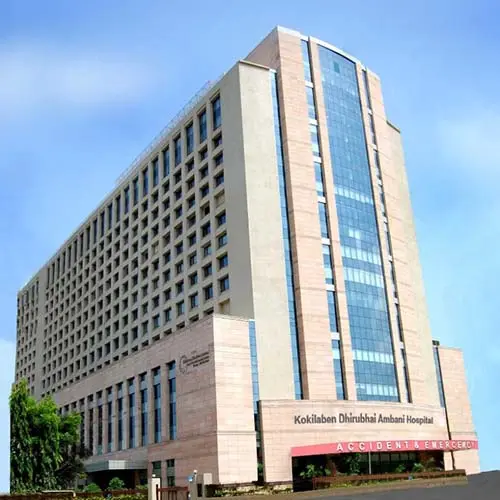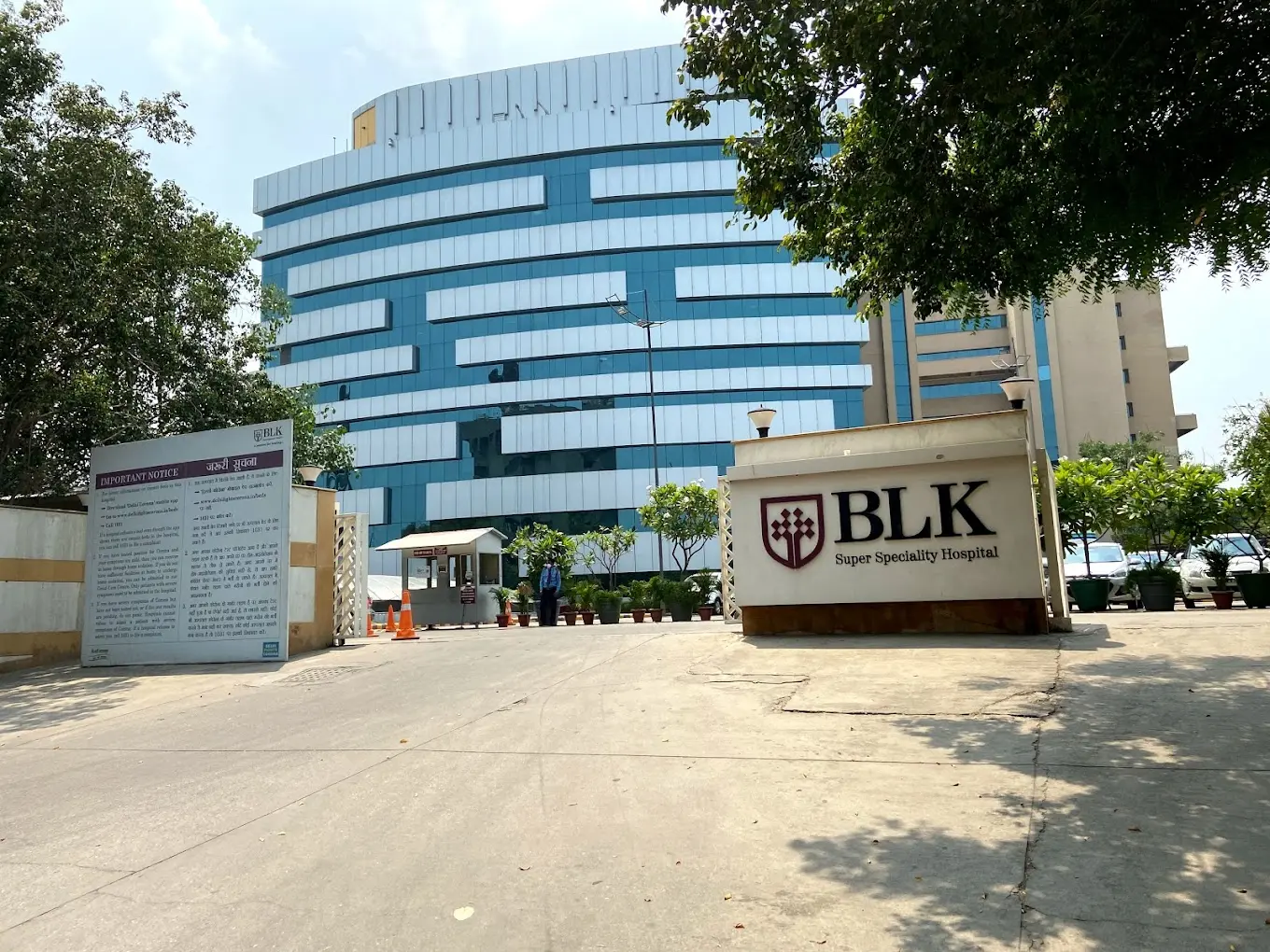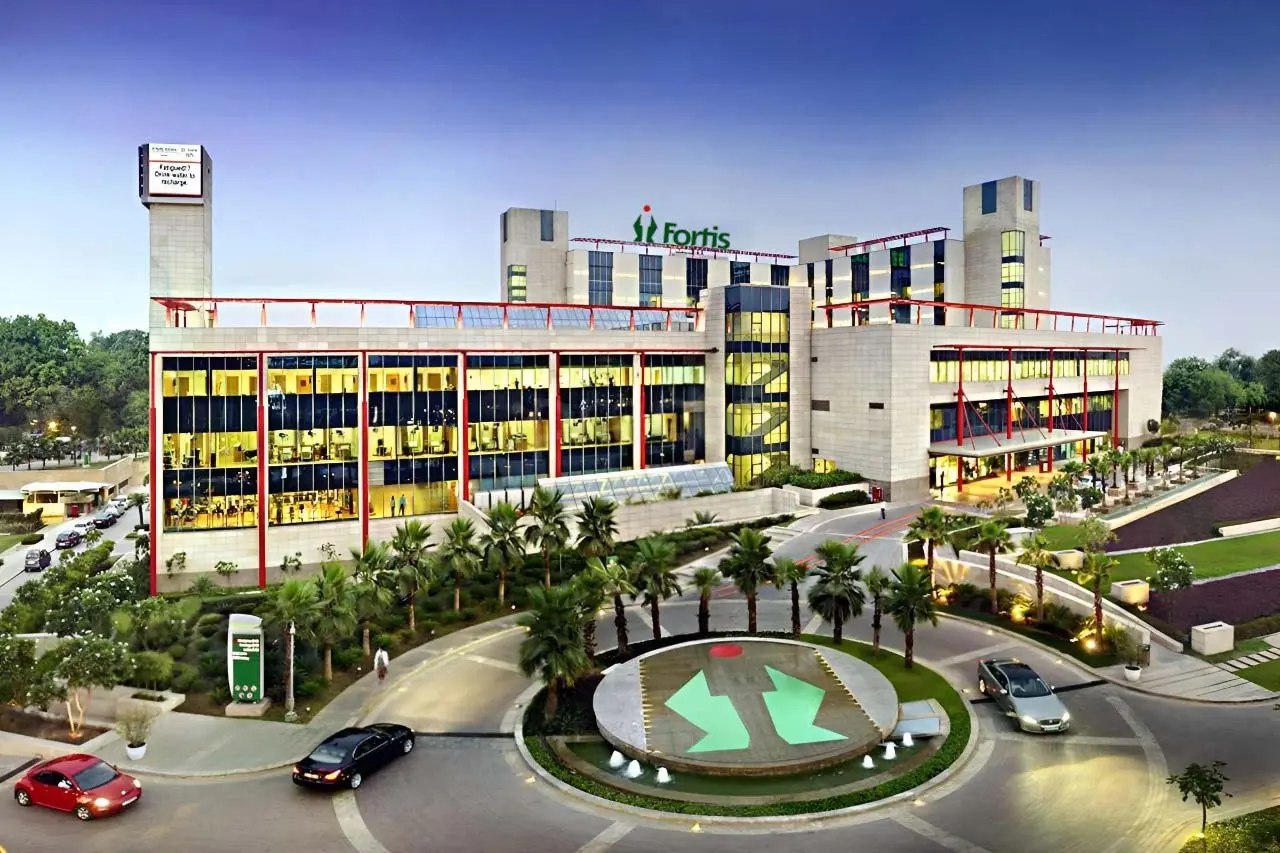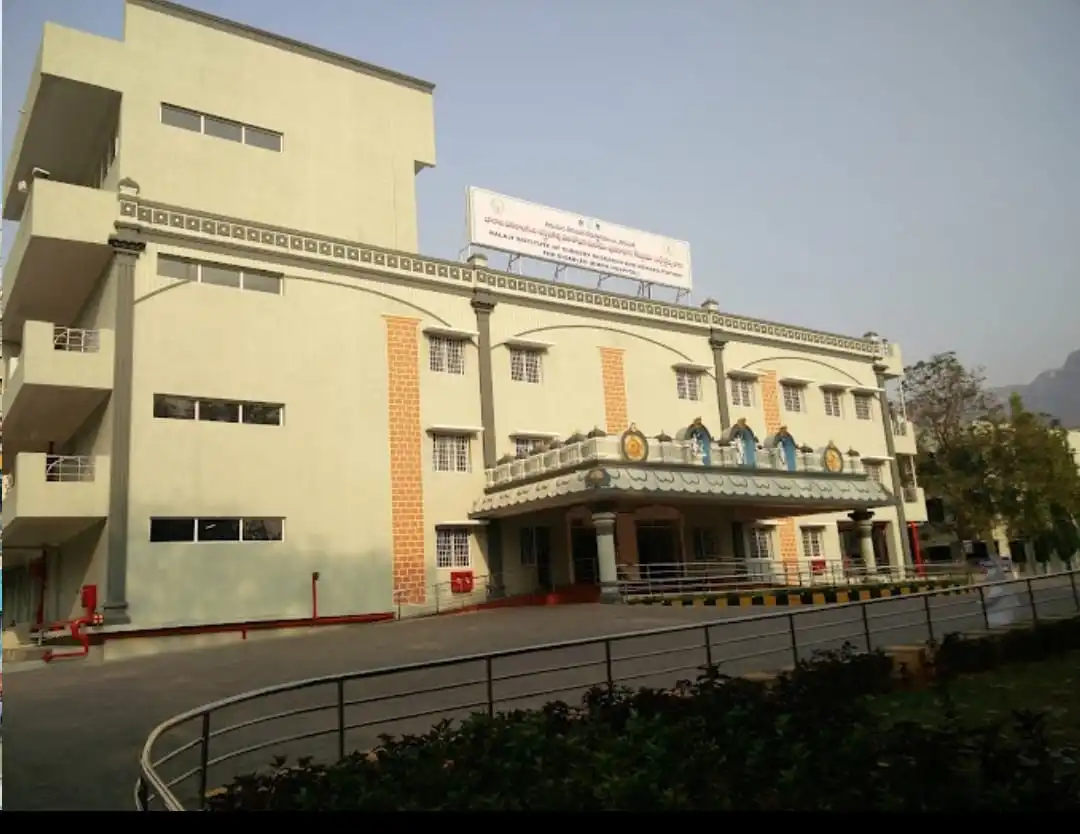Prostate cancer continues to be one of the most common cancers affecting men worldwide. And in some regions, the number of cases for prostate cancer exceeds that of breast cancer. In many cases, it develops silently, without noticeable symptoms in its early stages, underscoring the importance of regular screening and early detection.
When caught early, prostate cancer is highly treatable, with excellent survival rates. This blog explains what prostate cancer is, its types, symptoms, how it spreads, diagnostic methods, treatment options—especially for metastatic cases—and why India has become a popular destination for prostate cancer treatment.
What is prostate cancer?
Prostate cancer is a malignant (cancerous) tumor that develops in the prostate gland. The prostate gland, a tiny, walnut-shaped organ in males, secretes seminal fluid, which nourishes and carries sperm. It happens when prostate cells proliferate out of control and develop into a tumor. The cancer may develop slowly and stay localised (limited to the prostate), or it may become aggressive and spread (metastasise) to other regions of the body, usually the liver, lungs, lymph nodes, or bones.
Types of Prostate Cancer
Type | Commonality | Behavior |
Acinar Adenocarcinoma | Most common (>95%) | Usually slow-growing |
Ductal Adenocarcinoma | Less common | More aggressive |
Transitional Cell Carcinoma | Rare | Aggressive |
Small Cell Carcinoma | Very rare | Highly aggressive |
Squamous Cell Carcinoma | Extremely rare | Aggressive and fast-growing |
Neuroendocrine Tumors | Rare | Variable behavior |
Get a free cost estimate
What is metastatic prostate cancer?
The term "metastasis" describes how cancer spreads from its original location to different body parts. In general, cancer that has migrated outside of the lymph nodes and tissues directly around the prostate is referred to as metastatic prostate cancer or stage IV (4) prostate cancer. It's frequently called advanced prostate cancer. Most often, prostate cancer spreads to the liver, lungs, or bones.
Early signs men should look for before prostate cancer develops
In its early stages, prostate cancer often does not cause noticeable symptoms, which is why regular screenings are important, especially for men over 50 or those with risk factors. According to the Mayo Clinic, some early warning signs that may suggest prostate issues (not necessarily cancer, but worth medical evaluation) include:
- Frequent urination, especially at night (nocturia)
- Needing to rush to the toilet
- Blood in the semen
- Pain or burning during urination (dysuria)
- Difficulty in starting to pee
- Weak flow
- Erectile dysfunction or painful ejaculation
- Back or bone pain that doesn’t go away with rest
- Weight loss for no reason
- Dull ache in the lower back, hips, or pelvis
These symptoms can also be caused by benign conditions like benign prostatic hyperplasia (BPH) or infections, but it’s important to consult a doctor if they persist.
Regular PSA (Prostate-Specific Antigen), blood tests and digital rectal exams (DRE) are key tools in detecting prostate cancer early, often before symptoms appear.
How does metastasis of prostate cancer spread?
The following are the different levels of metastatic spread of prostate cancer:
Local Invasion
Cancer cells first grow beyond the prostate capsule into surrounding tissues, such as:
- Seminal vesicles (The fluids that will become semen are produced by glands called seminal vesicles)
- Bladder neck
- Rectum (less commonly)
Lymphatic Spread
The cancer enters nearby lymphatic vessels, travelling to regional lymph nodes, particularly in the pelvic area (obturator, iliac, and para-aortic nodes).
Hematogenous (Bloodborne) Spread
Cancer cells invade blood vessels and travel through the bloodstream. The most common distant site: Bone, especially the:
- Spine
- Pelvis
- Ribs
- Femur (thigh bone)
- Other less common sites: Liver, Lungs & Brain (rarely)
Bone Metastases Characteristics
In prostate cancer, bone metastases are usually osteoblastic, meaning they cause abnormal bone formation rather than bone destruction. This can lead to:
- Bone pain
- Fractures
- Spinal cord compression
- High levels of calcium in the blood (rare)
Where does prostate cancer spread?
Prostate cancer can spread anywhere but most commonly spreads to the:
- Bones
- Lymph nodes
- Liver
- Lungs
Bone metastasis
The bone is the primary organ to which prostate cancer spreads after leaving the prostate. About 60% of men with advanced prostate cancer will eventually develop bone metastases. Commonly affected bones include the hips, ribs, and spine.
Bone metastases can lead to serious complications, such as:
- Fractures
- Severe (excruciating) bone pain
- Mobility issues
Prostate cancer that spreads to the bone is still treated as prostate cancer, not bone cancer.
Lymph nodes
The lymph nodes are a common site where prostate cancer spreads after leaving the prostate. This spread is known as lymph node metastasis and occurs when cancer cells move through the lymphatic system.
The most commonly affected lymph nodes are in the pelvic and abdominal regions. About 30–40% of men with advanced prostate cancer will develop lymph node metastases.
Early lymph node involvement may not cause noticeable symptoms, but as the nodes enlarge, it can lead to:
- Swelling in the lower abdomen or legs
- Discomfort or pressure in the pelvic area
- A feeling of fullness
Even after spreading to lymph nodes, the disease is still treated as prostate cancer, not as a separate cancer.
Liver
The liver is a less common but serious site for prostate cancer metastasis. Liver involvement usually indicates advanced-stage disease and is associated with a poorer prognosis.
Approximately 5–10% of men with advanced prostate cancer will develop liver metastases. Symptoms of liver metastasis may include:
- Abdominal pain or discomfort
- Fatigue and weakness
- Nausea and unintended weight loss
- Jaundice (yellowing of the skin/eyes) if liver function is affected
Lungs
The lungs are a less common site for prostate cancer metastasis compared to the bones or lymph nodes. Lung metastases are typically a sign of advanced prostate cancer, often occurring alongside spread to other organs.
Approximately 3–5% of men with advanced prostate cancer will develop lung metastases. Symptoms of lung metastasis may include:
- Persistent cough
- Shortness of breath
- Chest pain or discomfort
In some cases, there are no symptoms. It is found incidentally on imaging tests.
Also Read: Non-Surgical Options for Benign Prostatic Hyperplasia
Stages of Prostate Cancer
The following is the staging chart for prostate cancer:
Stage | Definition | Description |
Stage I | Localized | Cancer is small and confined to the prostate; it usually grows slowly and may not cause symptoms. |
Stage II | Localized (More Advanced) | Cancer is still within the prostate but is larger or involves more of the prostate; it may grow more quickly. |
Stage III | Locally Advanced | Cancer has spread outside the prostate to nearby tissues like the seminal vesicles but not to distant organs. |
Stage IV | Advanced (Metastatic) | Cancer has spread to distant lymph nodes, bones, or other organs like the liver or lungs. |
Grading in Prostate Cancer
The Gleason score is used to describe the grade of prostate cancer. The aggressiveness of the cancer—if and how rapidly the tumour may develop and spread—is estimated using this score.
The following is the simplified version of grading chart for prostate cancer:
Grade Group | Gleason Score | Definition | Description |
Grade Group 1 | Gleason 6 (3+3) | Low Grade | Cancer cells look similar to normal cells: slow-growing and least aggressive. |
Grade Group 2 | Gleason 7 (3+4) | Favorable Intermediate Grade | Mostly less aggressive cells with some more abnormal ones; still relatively slow-growing. |
Grade Group 3 | Gleason 7 (4+3) | Unfavorable Intermediate Grade | More aggressive cells than Group 2; higher risk of growth and spread. |
Grade Group 4 | Gleason 8 (4+4, 3+5, or 5+3) | High Grade | Cancer cells look very abnormal and are likely to grow and spread more quickly. |
Grade Group 5 | Gleason 9–10 (4+5, 5+4, or 5+5) | Very High Grade | Most aggressive form; cancer grows rapidly and is more likely to spread to other parts of the body. |
The grades and the stages determine the course of the treatment for the prostate cancer.
Get a free cost estimate
What causes Prostate Cancer?
Causes and Risk Factors of Prostate Cancer Prostate cancer arises due to a combination of genetic, hormonal, environmental, and lifestyle factors.
While the exact cause is not fully understood, several key contributors have been identified:
1. Genetic and Biological Factors
A. Age
- Most significant risk factor – Rare before 40, but risk increases sharply after 50.
- ~60% of cases occur in men over 65.
B. Family History & Genetics
2-3x times higher risk if a father or brother had prostate cancer.
Inherited gene mutations increase risk:
- BRCA1/BRCA2 (also linked to breast/ovarian cancer).
- HOXB13 (familial prostate cancer gene).
- DNA repair defects (e.g., Lynch syndrome, ATM, PALB2).
C. Race/Ethnicity
- Black men have the highest risk (1 in 6 lifetime risk) and more aggressive disease.
- Asian men (especially in East Asia) have the lowest risk, possibly due to diet/genetics.
D. Hormonal Influences
- Testosterone & DHT (dihydrotestosterone) fuel prostate cancer growth.
- Men with higher lifelong androgen exposure may have increased risk.
2. Environmental & Lifestyle Factors
A. Diet
- A high intake of red/processed meat may be linked to aggressive prostate cancer.
- High-fat dairy may increase a risk of prostate cancer (possible association).
- Low intake of cruciferous vegetables (broccoli, cauliflower), tomatoes (lycopene), and fish (omega-3).
B. Obesity
- Obese men have a higher risk of aggressive prostate cancer.
- Adipose tissue promotes inflammation and hormonal imbalances.
C. Smoking & Alcohol
- Smoking may increase risk of deadly prostate cancer.
- Heavy alcohol use (possible weak link).
D. Chemical Exposures
- Agent Orange (Vietnam veterans) – Possible increased risk.
- Cadmium (battery workers, welders) – Weak association.
E. Chronic Inflammation & Infections
- Prostatitis (chronic inflammation) may contribute.
- Sexually transmitted infections (STIs) – Possible link (e.g., gonorrhea, HPV).
Diagnostic Tests for Prostate Cancer Treatment
The following tests are generally peformed for correct and thorough diagnosis of prostate cancer.
Blood tests
These include the basic blood investigations for the patient to check organ functioning, infection status and tumor markers (PSA levels, CEA levels).
Radiological Assessment
This includes MRI, bone scan, or any other tests to check for tumor status.
Histopathology Examination
This includes tests such as fine needle aspiration cytology (FNAC) and TRUS-guided biopsy of the prostate tissue taken from the tumor site to establish the Gleason score.
Full Body PET Scan
This includes a full-body PET FDG or PET PSMA (prostate-specific membrane antigen PET) scan to check for metastasis and establish the stage of the cancer.
Treatment for Metastatic Prostate Cancer
Metastatic prostate cancer (cancer that has spread beyond the prostate to distant organs such as bone, lymph nodes, liver, or lungs) is not curable, but it is treatable. The following are generally the treatment options that are available to patients with metastatic prostate cancer:
Hormone Therapy (Androgen Deprivation Therapy – ADT)
Purpose: Reduces levels of testosterone, which fuels prostate cancer growth.
Types of Hormone Therapy:
- LHRH agonists/antagonists (e.g., leuprolide, degarelix)
- Surgical castration (orchiectomy)
Often combined with: chemotherapy or newer hormone-blocking agents.
Chemotherapy
Purpose: Kills rapidly dividing cancer cells; used especially in aggressive or hormone-resistant cases.
Use: May be given upfront with ADT in high-volume metastatic disease.
Radionuclide Therapy (Targeted Radiotherapy)
These therapies use radioactive particles that target prostate cancer cells, especially those expressing PSMA (Prostate-Specific Membrane Antigen):
a. Lutetium-177-PSMA (¹⁷⁷Lu-PSMA)
- Therapy Mechanism: Delivers targeted radiation to PSMA-positive cells.
- Use: For metastatic castration-resistant prostate cancer (mCRPC) that has progressed after hormone therapy and chemotherapy.
- Benefits: Shown to improve survival and quality of life with manageable side effects.
b. Actinium-225-PSMA (²²⁵Ac-PSMA) Therapy
- Mechanism: Uses a stronger alpha-emitting radionuclide for deeper tumor cell destruction.
- Use: Still largely investigational; may be considered in patients who do not respond to ¹⁷⁷Lu-PSMA therapy.
- Advantages: Higher energy and shorter tissue penetration may lead to more precise tumor targeting with less damage to healthy tissue.
Immunotherapy
- Example: Sipuleucel-T (Provenge)—a cancer vaccine for mCRPC.
- Use: May offer modest survival benefit in selected patients.
Bone-Targeted Therapy
- Used: When cancer has spread to bones. Protect bones from cancer damage and fractures.
- Options: Bisphosphonates (e.g., zoledronic acid) RANKL inhibitors (e.g., denosumab) Radiopharmaceuticals (e.g., Radium-223 for bone metastases)
Palliative Treatments
- Goal: Manage symptoms like bone pain, spinal cord compression, or urinary obstruction
- Methods: Radiation therapy, pain medications, surgery (rarely)
Prostate Cancer Treatment in India: Expected Outcomes
Sometimes cancer develops so slowly that you might not require treatment right away. Prostate cancers that haven't spread outside of the prostate gland are often cured with treatment.
If your doctor finds prostate cancer early, you have a very good prognosis. After being diagnosed with cancer that hasn't spread outside of their prostate, 99 percent of people survive for at least five years.
When your prostate cancer spreads, or spreads outside of your prostate, your chances of survival are reduced. After five years, thirty-two percent of patients with metastatic prostate cancer are still living.
Why is India preferred as one of the best countries for medical treatment?
India has emerged as one of the most preferred destinations for medical treatment globally, attracting over 2 million international patients annually. This growing popularity is attributed to several compelling factors, including a robust healthcare infrastructure, internationally accredited hospitals, skilled medical professionals, and significant cost advantages. According to the Medical Tourism Association, patients travelling to India can save anywhere from 60% to 90% on healthcare costs compared to the US, UK, or Europe, without compromising on the quality of care.
One of the key advantages for international patients is the absence of long waiting periods. In countries like the UK or Canada, patients may wait weeks or months for diagnostic tests or surgery. In contrast, Indian hospitals offer swift admissions, immediate consultations, and timely surgical interventions, particularly beneficial in time-sensitive conditions like cancer.
India’s healthcare ecosystem boasts more than 40 Joint Commission International (JCI)-accredited hospitals and hundreds of NABH-accredited facilities, ensuring that global standards in safety, hygiene, and medical protocols are upheld. The country is also home to globally renowned doctors and surgeons, many of whom have trained and worked in top institutions across the US, UK, Europe, and Australia. English-speaking medical staff and dedicated international patient departments further ease the experience of foreign patients.
Advanced Cancer Care, Including Prostate Cancer
India is particularly recognised for its expertise in oncology, offering comprehensive cancer care that includes radiation therapy, immunotherapy, targeted therapy, chemotherapy, and robotic cancer surgery. Cancer care in India is not just affordable but also highly specialised, supported by state-of-the-art diagnostic and therapeutic technologies.
Prostate cancer, one of the most common cancers among men worldwide, is managed in India with cutting-edge techniques and precision-based approaches. Hospitals in cities like Delhi, Mumbai, Chennai, and Bangalore offer robot-assisted laparoscopic prostatectomy using platforms such as the da Vinci Surgical System, which enhances precision, reduces blood loss, speeds up recovery, and minimizes hospital stays.
In addition, Indian hospitals are equipped with advanced radiotherapy systems like:
- CyberKnife for stereotactic body radiotherapy (SBRT), a non-invasive option for localized prostate cancer.
- MRI-guided radiotherapy and intensity-modulated radiation therapy (IMRT), which deliver high-dose radiation with minimal damage to surrounding tissues.
Moreover, Indian oncologists are pioneering the use of PSMA PET-CT scans for accurate staging and PSMA-targeted therapies, especially in cases of metastatic or recurrent prostate cancer. These technologies are on par with those available in developed nations but come at a fraction of the cost.
Innovation and Research-Driven Approach
India is also making strides in cancer research and personalized medicine. Many leading hospitals collaborate with global research institutions and conduct clinical trials for the latest cancer therapies. Hospitals are increasingly integrating genomic profiling and molecular diagnostics to tailor treatment plans specific to the patient's cancer type and genetic makeup.
Top Prostate Cancer Treatment Hospitals in India
Dr. Basim Parvez
Author
Dr. Basim Parvez is a licensed physiotherapist and Senior Patient Consultant at HOSPIDIO, holding an MBA in Health Management. With extensive clinical experience and a compassionate approach, he assists patients navigating medical treatments. Dr. Basim also leverages his writing talent to simplify complex healthcare information, empowering patients to make informed decisions and fostering clarity and confidence in their medical journeys.
Guneet Bindra
Reviewer
Guneet Bhatia is the Founder of HOSPIDIO and an accomplished content reviewer with extensive experience in medical content development, instructional design, and blogging. Passionate about creating impactful content, she excels in ensuring accuracy and clarity in every piece. Guneet enjoys engaging in meaningful conversations with people from diverse ethnic and cultural backgrounds, enriching her perspective. When she's not working, she cherishes quality time with her family, enjoys good music, and loves brainstorming innovative ideas with her team.

